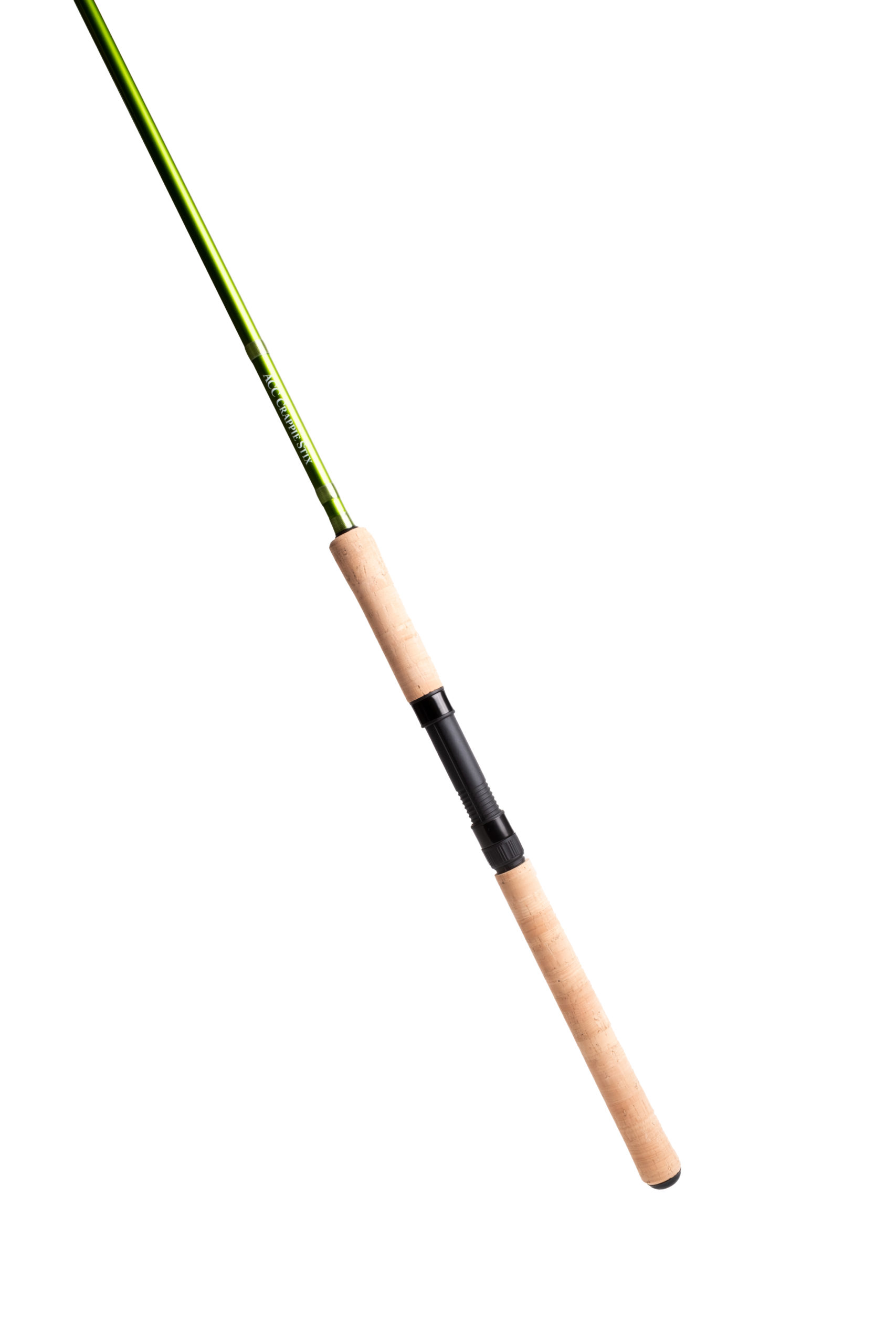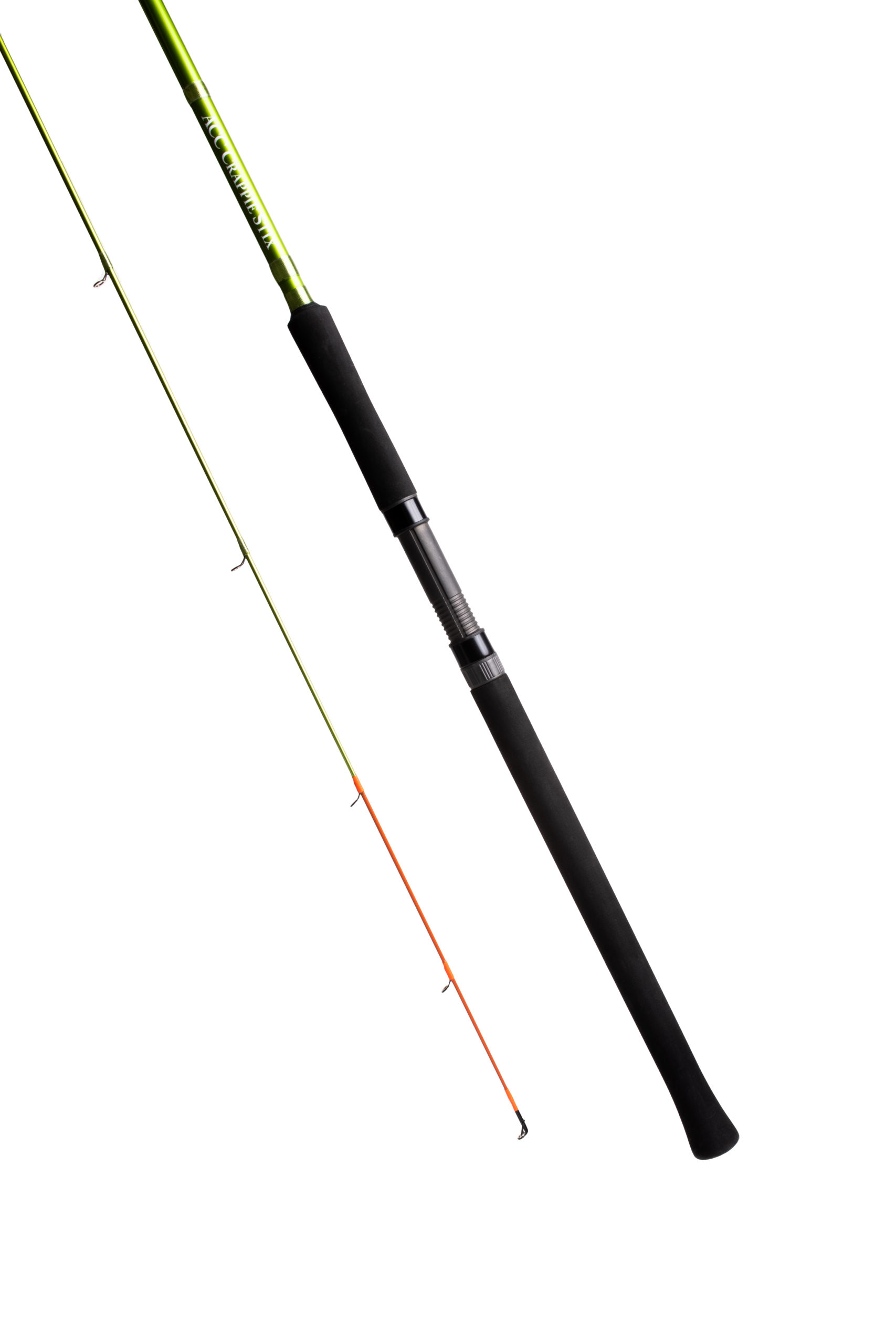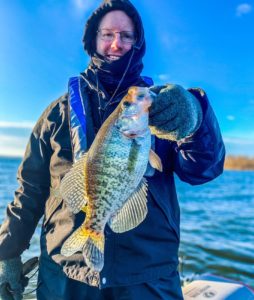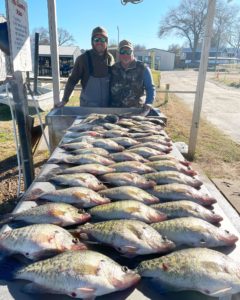Winter Crappie Fishing: 5 Things to Know
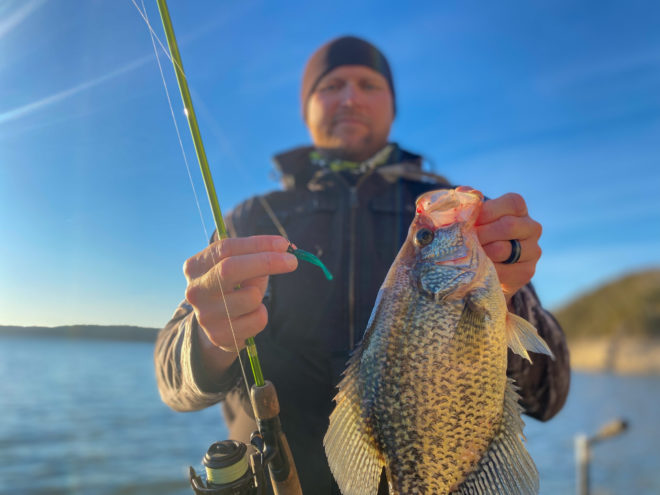
By Greg McCain
Gone are the days when crappie fishermen stowed their gear after the spring season.
The bite, most have discovered, extends far beyond that roughly two-month window when a large percentage of crappie move shallow and spawn. While fishing can indeed reach a peak at that time, other periods of the year feature a crappie bite that can be just as hot. One of those times is now, at the height of the winter chill when water temperatures drop to their coldest.
Whether it’s fishing in 40-degree water well into the South or fishing frozen lakes in the North, crappie fishing in the winter remains a viable option. Just ask members of the ACC Crappie Stix pro staff, and they will tell you that some of the best action of the year occurs in the coldest months.
“For me personally, it’s the best time and my favorite time of year, especially to target the bigger fish,” said Alabama tournament competitor, guide and pro staff member Jeff Jowers, who mainly fishes the Coosa River chain south of Birmingham.
Jeff (Southern Scales Guide Service, 205.294.9202) is just one of numerous ACC pro staffers who responded to queries about winter fishing. They came through in such a big way that their responses will be divided into two parts. Here’s 5 Things to Know about Winter Crappie Fishing Part I. Check back soon on the ACC blog for Part II.
1) Patience and Persistence
A pair of Rend Lake (Illinois) veterans, Brandon Bullard and Fred Mooney, provide some food for thought about approaching a day on the lake in the winter. The basic premise: patience usually pays off in the long run.
Because the metabolism of fish slows considerably in cold water, they don’t necessarily feed as often. Feeding windows can be fleeting. That characteristic likely results in moments of frustration for anglers, especially those who can see plenty of unresponsive fish with live technology.
“Patience and persistence is key for myself or for any fisherman in most circumstances,” said Brandon. “I find out what works best that day by trial and error and learn from my victories and defeats. At the end of the day, it just makes you that much better of an angler.”
Fred (Full Moon Fishing Service, 618.731.1601) knows that if he keeps moving on Rend, he will eventually find feeding fish. That idea applies to most fisheries in the winter.
“What I’ve found is not every deep pile will be active or eating, but on the piles that are, the bite will be fast and furious,” Fred said.
2) Lure choice: Consider downsizing
Several pro staffers reiterated ideas about the right size of lures to choose for winter fishing. While bigger lures still have their place at times, downsizing is a definite consideration, especially if the bite is tough.
“Cold weather crappie are either very finicky, or at times, just hammer it,” Minnesota angler Goose Gutzman said. “My experience through the years is to downsize with finesse baits when they race up and hit the brakes on my bigger presentations.”
Added Jeff Jowers, “As far as baits of choice, if fishing a post-front situation I’ll stick to a smaller profile bait like a hand-tie. For a pre-front situation, I can get away with a much larger bait.”
A small hand-tied hair jig makes for a very subtle approach year round. If you find yourself in a plastic rut with little success, consider the alternative. Quality hand-ties, while less accessible than plastics, are readily available from internet outlets and from local baitshops that cater to crappie fishermen.
3) Cater presentations to the fish
Crappie vary in their moods and respond to lures in different ways. Learning to recognize how fish respond on a given day produces more strikes, and slight changes in presentation can trigger the bite.
“The most important thing I’ve noticed when fishing deep is bait presentation,” said Texas guide Sam Parker (check out Freshwater Fishing Adventures on Facebook for information about guided trips). “Imitating bait fish is going to put more fish in the boat as opposed to ‘jigging’ the bait up and down.
“I believe the motion of ‘jigging’ works in shallow water because it’s more so imitating a bug or something. But crappie are not eating bugs in deep water. They are eating minnows or mostly shad. Presenting the jig as a bait fish is a key to success.”
The rate of presentation or retrieve is also important. For winter fishing, slow is most often better. Brandon Bullard said “slowing down the presentation to lethargic fish” is one of his keys to success. “Maybe even holding it on their nose for a reaction bite,” he added.
4) Be prepared for a delicate bite
While fishermen may experience the thump of a crappie inhaling a jig in the winter, often the
bite is much less obvious.
Without the thump and line jump that often indicate warm-water bites, colder water likely means a subtle strike. Paying attention to the rod tip and the line can help detect those light bites.
“You really gotta watch your rod tip because it barely even moves,” Goose said.
For his ice fishing needs, Goose (check out his Facebook page for information about Goose’s Guide Service) mentions the 32-inch ACC Crappie Stix Ice Rod, which features a very sensitive tip that helps indicate the most delicate nibble. Whether the choice is an ice rod or one of ACC’s more traditional models, a good rod with great sensitivity is important to detecting a light winter bite.
5) Dress for the occasion
While safety is a priority at all times of the year, being extra careful in the winter is important for fairly obvious reasons. Dressing for the occasion is one of the first steps in avoiding life-threatening experiences on the water. In general, good clothing designed for cold weather makes for a better, more comfortable day of fishing.
“After about (falling) in several years ago with temperatures in the single digits, I invested in a suit with a positive buoyancy, and having that sense of security is comforting,” said Oklahoma guide Don McClish (PointBreak Crappie Guide Serivce, 918.316.3363).
Several other ACC pro staffers have mentioned flotation suits as a good outer layer for winter fishing. Such suits are pricey but worth the expense, especially for fishermen who spend many days on the water..
The same is true of base layers. Modern materials have made the outdoor experience much more pleasurable, and that starts with base layers. The quick-dry fabric available today comes in several levels of comfort ranges, allowing anglers to stay warm and dry even in extreme situations. A bonus is the price has come down to a more reasonable level in recent years.
If you haven’t experienced crappie fishing in cold weather, consider the tips offered by the ACC pro staff. The advice comes from the experience gleaned from many days on the water and will definitely make just about anyone a more knowledgeable and proficient fisherman.




